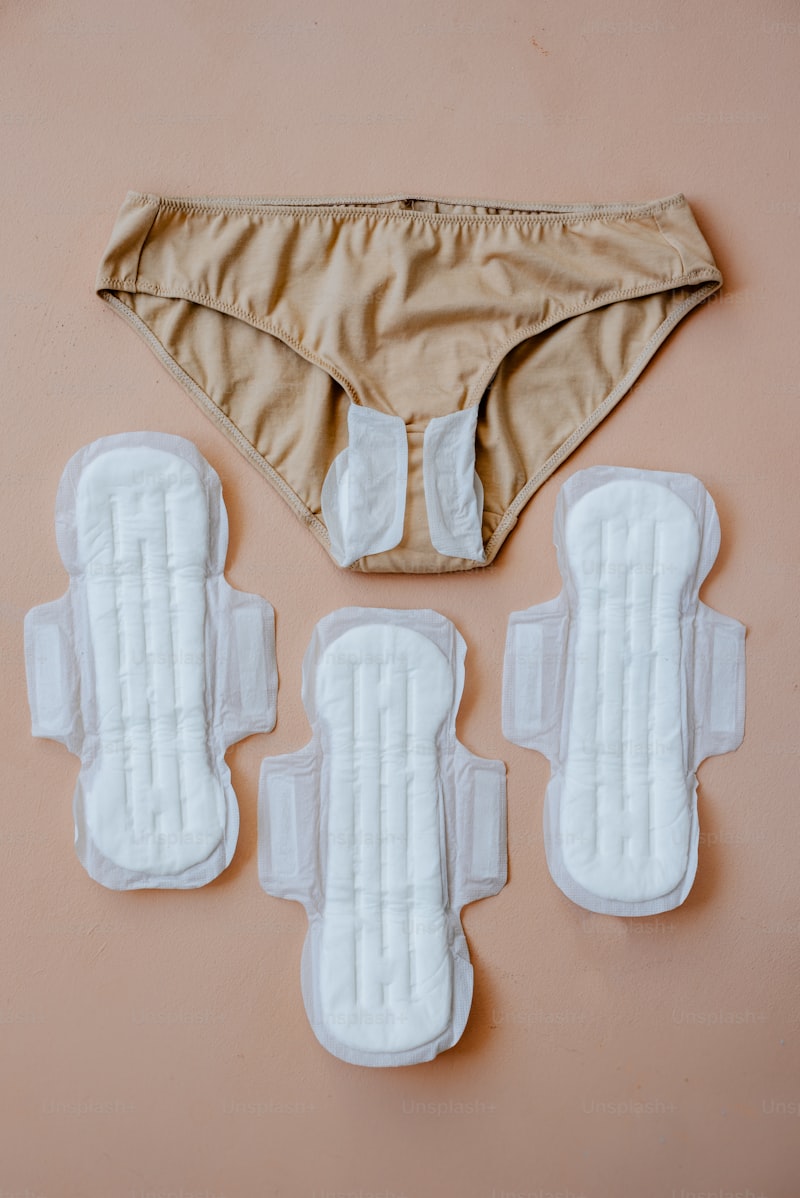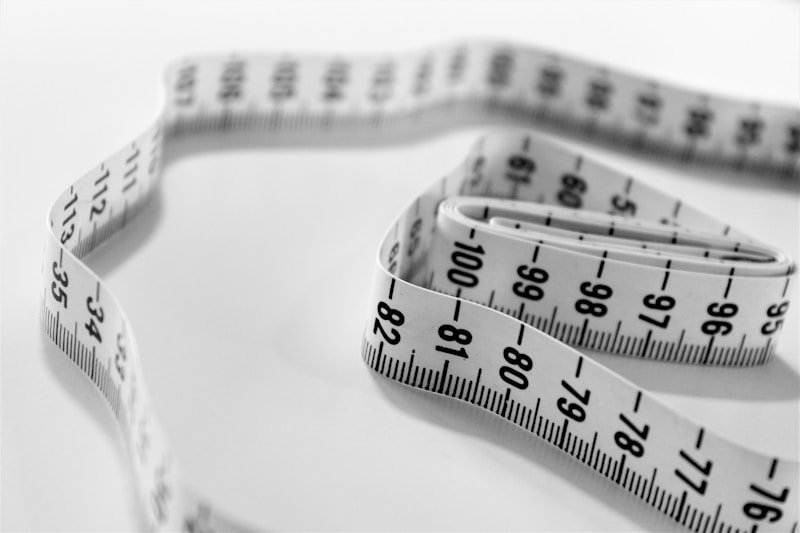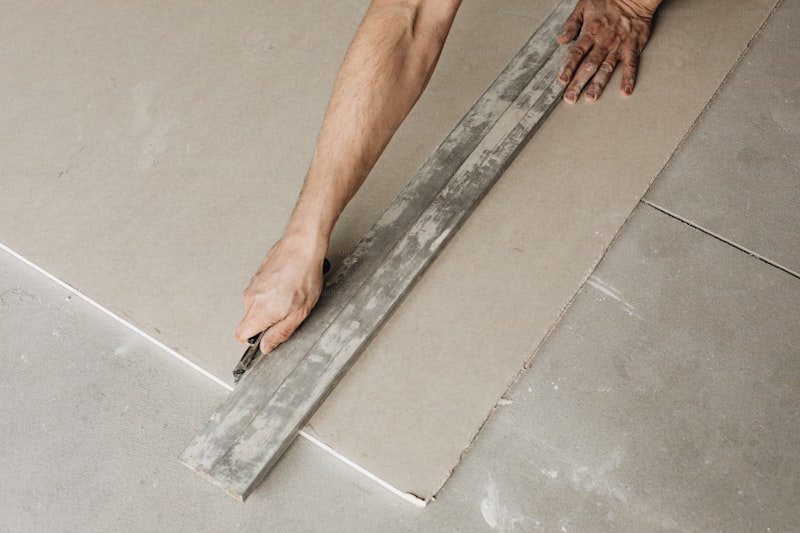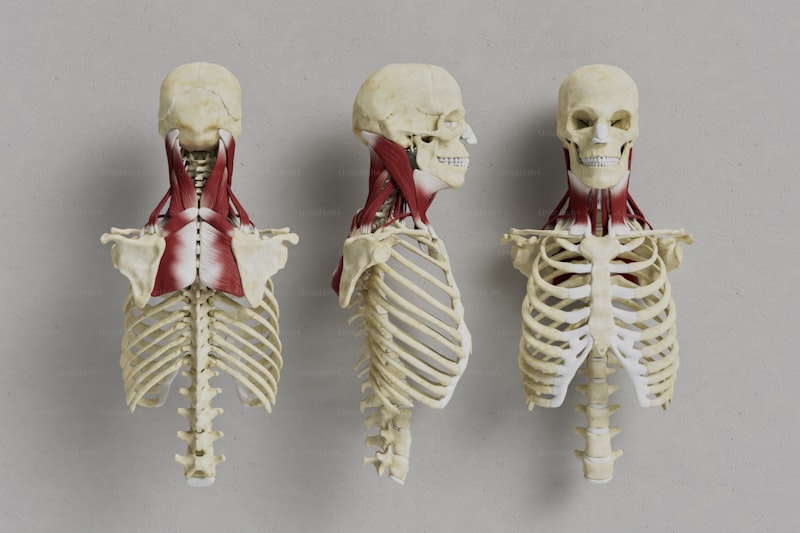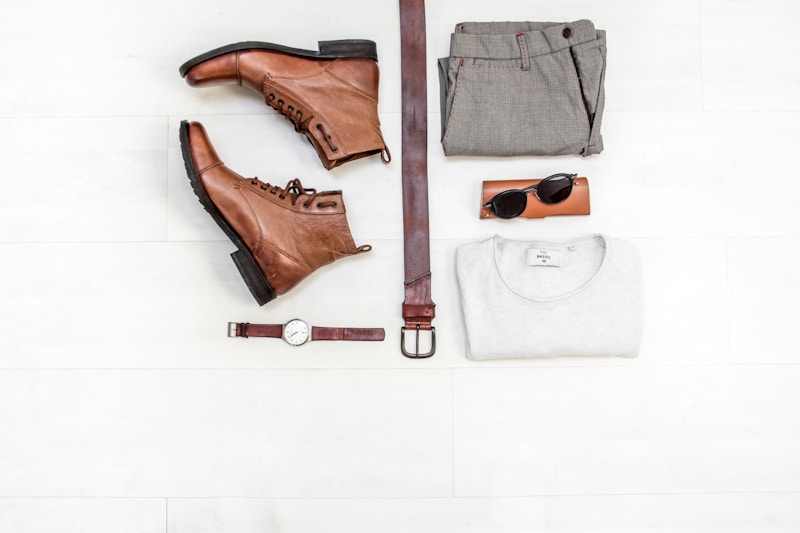Unveiling the Benefits of Supportive Undergarments: A Comprehensive Guide
What Are Supportive Undergarments? Supportive undergarments are specially designed clothing pieces that provide comfort, lift, and shape to the wearer's body. They include bras, shapewear, supportive panties, and even athletic wear that helps maintain proper posture and support during physical activities. These garments are not just about aesthetics; they also promote body confidence and contribute to overall comfort throughout daily activities. Why Choose Supportive Undergarments? The right supportive undergarments can make a significant difference in both how you feel and how your clothing fits. Here are some reasons to consider incorporating them into your wardrobe: Enhanced Comfort: Supportive undergarments are designed using soft, breathable fabrics that reduce discomfort, especially for individuals who are on their feet for long periods of time. Improved Posture: Many supportive garments, such as certain bras and shapewear, are engineered to encourage proper posture, which can alleviate back pain and fatigue. Tailored Fit: The right undergarments help create a smoother silhouette, making outfits fit better and enhancing your overall appearance. Confidence Boost: Feeling well-supported can significantly enhance your confidence. When you know you look good, it translates into how you carry yourself. Types of Supportive Undergarments Understanding the different types of supportive undergarments can help you make informed choices based on your specific needs: TypePurpos...
Choosing the Right Neckline: A Guide to Flattering Your Figure
Understanding Necklines: Why They MatterWhen it comes to fashion, details can make all the difference. One key element that often gets overlooked is the neckline of a garment. Choosing the right neckline can enhance your overall look, complement your features, and make you feel more confident in your style. In this article, we will explore different types of necklines, how they affect your appearance, and tips for selecting the perfect one for any occasion.Types of NecklinesThere are numerous necklines to choose from, and each one serves a specific purpose in fashion. Understanding these different options can help you make informed choices when shopping or designing your wardrobe. Below, we will discuss some of the most common neckline styles: Neckline Type Description Best Suited For Round Neck A classic, soft curve that sits close to the collarbone, providing a clean and simple look. Every body shape V-Neck A shape that dips down to a point, elongating the neck and creating a slimming effect. Petite and curvy figures Square Neck Square cut that creates an angular silhouette, often highlighting the collarbones. Great for hourglass shapes Off-Shoulder Exposes the shoulders for a flirty, feminine look. Ideal for summer events Asymmetrical One side is cut lower than the other, offering a modern and edgy appearance. Fashion-forward individuals How Necklines Affect Your AppearanceThe neckline you choose ...
Effective Weight Distribution Strategies: Maximizing Stability and Performance
Understanding Weight Distribution StrategiesWeight distribution strategies are crucial for ensuring stability, performance, and safety in various fields such as automotive engineering, aerospace, sports, and even logistics. Proper weight distribution not only enhances the functionality of vehicles and equipment but also improves overall efficiency and user experience. In this article, we will delve into effective weight distribution strategies, their applications, and best practices to consider for optimal results.What Is Weight Distribution?Weight distribution refers to the method of spreading or allocating weight across different components of a system to achieve balance and effectively manage load. This concept is particularly important in areas such as vehicle design, where uneven weight distribution can lead to issues like reduced handling, increased wear and tear on parts, and compromised safety. Properly distributing weight helps to maintain control and extend the lifespan of various systems.Importance of Weight Distribution StrategiesWhy are weight distribution strategies important? Here are a few reasons: Enhanced Stability: A well-balanced system minimizes the risk of tipping or losing control. Improved Performance: Optimizing weight distribution can lead to better handling and efficiency. Increased Safety: Proper distribution reduces the likelihood of accidents by ensuring predictable responses during operation. Longevity of Equipment: Equal weight dist...
Lining Material Comfort: The Key to Ultimate Wearability
Understanding Lining Material ComfortWhen it comes to clothing, comfort is paramount. One significant element that contributes to comfort is the choice of lining material. Lining materials can make or break the wearability of an outfit, affecting everything from temperature regulation to mobility. In this article, we will dive deep into the types of lining materials, their characteristics, how they enhance comfort, and the key factors to consider when selecting garments.The Importance of Lining MaterialLining material serves multiple functions in clothing. It covers the seams, provides a smooth surface against the skin, and can even add structure and warmth. However, the most critical aspect of lining is comfort. Let’s examine why the choice of lining material is so crucial: Temperature Control: Some materials wick moisture away from the skin, while others provide insulation. Softness and Feel: Lining should feel good against the skin to avoid irritation. Durability: Quality linings can withstand wear and tear, prolonging the life of the garment. Breathability: Proper lining ensures that air circulates, preventing overheating.Common Types of Lining MaterialsThere is a variety of lining materials available, each with its own set of properties that contribute to comfort. Below are some common types of lining materials:MaterialCharacteristicsComfort LevelSilkSoft, luxurious, and breathableHighCottonNatural, breathable, and hypoallergenicHighPolyesterDurable, moisture...
Comprehensive Guide to Train Length Considerations for Optimal Rail Operations
Introduction to Train Length ConsiderationsIn the world of rail transportation, understanding train length considerations is crucial for efficient operation, safety, and cost-effectiveness. Train length not only impacts the operational aspects of the railway system but also influences the experience of commuters and the cargo capabilities of freight trains. In this article, we will explore various factors that contribute to train length considerations, addressing key components such as safety, scheduling, station infrastructure, and environmental impacts.Factors Influencing Train LengthSeveral factors come into play when determining optimal train length. These include:Safety Regulations: Adhering to safety standards is paramount in railway operations. Train length must comply with regulations set by transportation authorities.Infrastructure: The length and configuration of tracks, platforms, and crossings can dictate the maximum train length.Passenger Demand: For passenger services, anticipating passenger numbers can affect train lengths and frequencies to ensure comfort and efficiency.Freight Needs: Different types of cargo have specific requirements influencing the length and weight of freight trains.Safety ConsiderationsSafety is the cornerstone of rail operations, and train length plays an integral role in ensuring safe travel. Longer trains may present more significant challenges in terms of stopping distances and maneuverability. Implementing advanced signaling systems ...
Understanding the Movement Freedom Test: A Comprehensive Guide
Introduction to Movement Freedom TestIn recent years, the concept of a Movement Freedom Test has gained traction among fitness enthusiasts, rehabilitation specialists, and athletes alike. This test is essential for understanding an individual's mobility, flexibility, and overall physical performance. Whether you are a professional athlete or just someone looking to improve your daily activities, understanding your body's movement freedom is crucial. In this article, we will dive deep into what the Movement Freedom Test entails, its benefits, and how to effectively integrate it into your fitness regimen.What is the Movement Freedom Test?The Movement Freedom Test is designed to evaluate the unrestricted range of motion within your body. It helps identify any limitations or restrictions in movement that may hinder physical performance or lead to injury. The test typically encompasses various movements that target different muscle groups and joints, assessing functional mobility rather than just isolated flexibility.Why is Movement Freedom Important?Movement freedom is vital for several reasons: Injury Prevention: By identifying movement limitations, individuals can address these issues before they lead to injuries. Enhanced Performance: Athletes benefit from improved range of motion, which can translate into better performance in their respective sports. Daily Activities: Increased mobility can significantly improve the quality of life by making everyday tasks easier to...
Exploring the Beauty of Dynamic Body Shapes
Understanding Dynamic Body ShapesIn today’s world, body shapes are celebrated in all their forms. When we talk about dynamic body shapes, we are referring to the ever-evolving silhouettes that individuals embody, reflecting their lifestyle, health, and personal choice. This article delves into the concept of dynamic body shapes, exploring their significance, implications for health and fitness, as well as their role in fashion and self-expression.The Concept of Dynamic Body ShapesDynamic body shapes are not static. They can be influenced by various factors, including diet, exercise, hormonal changes, and even psychological health. Unlike traditional models that often emphasize a single ideal body type, dynamic body shapes acknowledge that bodies change and grow over time.The Importance of Embracing Dynamic ShapesEmbracing dynamic body shapes encourages individuals to appreciate their bodies at every stage. Here are a few reasons why this acceptance is crucial: Reduces the stigma of body shaming. Promotes healthier lifestyle choices over strict dieting. Encourages self-love and positivity.The Impact of Dynamic Body Shapes on Health and FitnessDynamic body shapes can also reflect one's physical health. Regular exercise and balanced nutrition play a vital role in shaping our bodies.Table of Recommended Activities for Various Body ShapesBody ShapeRecommended ActivitiesBenefitsApple ShapeCardio, Strength TrainingReduces waist size, boosts metabolismPear ShapeLower body wo...
Understanding Responsive Design Elements: A Comprehensive Guide for Modern Web Development
Introduction to Responsive Design ElementsIn today's digital landscape, having a responsive website is crucial for providing an optimal user experience across various devices. Responsive design elements play a significant role in creating adaptable layouts that enhance usability and accessibility. This article will explore the importance of responsive design, key elements involved, best practices, and frequently asked questions surrounding this vital aspect of web development.What is Responsive Design?Responsive design is an approach to web development that ensures websites function well on a multitude of devices and screen sizes. The primary goal is to provide a seamless user experience, regardless of whether a visitor is using a smartphone, tablet, or desktop computer. The use of fluid grids, flexible images, and CSS media queries allows designers to create layouts that respond to the user's environment.Key Elements of Responsive DesignSeveral critical elements are involved in responsive design. Understanding these components is essential for web developers and designers aiming to enhance their websites. Here are some of the most important responsive design elements:ElementDescriptionFluid GridsFluid grids use relative units like percentages instead of fixed units like pixels, allowing elements to resize based on the viewport.Flexible ImagesImages are scaled within their containing elements to prevent overflow and distortion on different devices.Media QueriesMedia queries a...
Sleeve Styles for Practicality: A Comprehensive Guide
When it comes to fashion, sleeves play a crucial role not only in the aesthetics of an outfit but also in its functionality. Understanding the various sleeve styles for practicality can help you make informed choices that enhance both your style and comfort. This article delves into different sleeve styles, their practical benefits, and offers tips on how to choose the right one for any occasion.1. Understanding Sleeve StylesSleeve styles vary widely, thus offering numerous options for every outfit. From casual wear to formal attire, the style of the sleeve can influence the overall appearance and practicality of clothing. Below, we will explore the most popular sleeve styles and their practical features:Sleeve StyleDescriptionPractical BenefitsCap SleevesShort sleeves that cover only the shoulder.Great for hot weather, providing coverage while offering breathability.Short SleevesTypically extend from the shoulder to just above the elbow.Versatile for both casual and professional settings, easy to move in.Three-Quarter SleevesEnding between the elbow and the wrist, offering more coverage.Perfect for transitional weather, adding a bit of warmth without being too long.Long SleevesCovering the arm all the way to the wrist.Provide maximum coverage and warmth, suitable for cooler climates.Bell SleevesFitted at the top and flaring out towards the bottom.Offer a stylish option for adding flair while still being practical.Fitted SleevesTapered sleeves that cling to the arm.Great for ...
Understanding Fabric Weight and Feel: A Comprehensive Guide
When it comes to choosing the right fabric for your clothing, upholstery, or craft projects, understanding fabric weight and feel is crucial. The weight and feel of a fabric can significantly influence its appearance, durability, and suitability for specific applications. In this article, we will explore what fabric weight and feel mean, how they are measured, and their importance in the textile industry. We'll also delve into various fabric types and provide a handy reference table for quick understanding.What is Fabric Weight?Fabric weight refers to the heaviness or lightness of a fabric, often measured in grams per square meter (GSM) or ounces per square yard (oz/yd²). This metric is essential when selecting fabric, as it affects how the material drapes and its overall feel. Lighter fabrics (typically under 150 GSM) are generally more breathable, making them ideal for warm weather garments such as dresses and t-shirts. Heavier fabrics (over 300 GSM), on the other hand, offer durability and warmth, suitable for jackets and outerwear.Common Fabric Weight CategoriesFabric Weight CategoryTypical GSM RangeExamplesLighter FabricsBelow 150 GSMSilk, Lightweight Cotton, Sheer PolyesterMedium-Weight Fabrics150-300 GSMCotton Broadcloth, Linen, Light DenimHeavyweight FabricsAbove 300 GSMTwill, Canvas, Denim, WoolUnderstanding Fabric FeelThe feel of the fabric refers to its texture and hand, significantly influencing how it drapes and moves. Fabric feel can encompass a wide range of se...
Cushioned or Structured Support: Finding the Right Footwear for Your Needs
IntroductionChoosing the right footwear can significantly impact both comfort and health. Whether you're an athlete, a casual walker, or someone who spends long hours on their feet, the debate between cushioned or structured support often arises. Each type of footwear offers unique benefits, and understanding these can help you make an informed decision. In this article, we will explore the distinctions between cushioned and structured support shoes, their benefits, and when to choose one over the other.Understanding the BasicsFootwear design mainly falls into two categories: cushioned support and structured support. But what does each term mean?Cushioned SupportCushioned support shoes are designed with soft materials that absorb impact. They often feature extra padding, especially in the sole and upper parts, making them ideal for those needing comfort during extended wear. Examples include running shoes and some cross-training shoes.Structured SupportIn contrast, structured support shoes focus on stability and support for the foot's natural arch. These shoes are often stiffer, providing better alignment for those who require it. They are suited for individuals with flat feet, overpronation, or other specific foot conditions.Cushioned SupportStructured SupportSoft, cushioned materialsStiffer, supportive materialsBest for comfortBest for stabilityGreat for long walks and sportsIdeal for flat feet and overpronationLess arch supportOffers substantial arch supportThe Benefits of...
Understanding Proper Sizing and Measurements for an Ideal Fit
Why Proper Sizing and Measurements MatterIn today's world, where personal style and comfort matter immensely, understanding proper sizing and measurements is crucial. Whether you are shopping for clothes, furniture, or even home improvements, size can make or break your experience. This article will delve deep into the significance of accurate sizing, explore various contexts where sizing is vital, and provide tips to ensure you make the best choices.The Importance of Proper SizingImagine ordering a pair of shoes online that you’ve been eyeing for weeks, only to find out they do not fit. Or purchasing a gorgeous sofa that won't fit through your door. These scenarios highlight the importance of accurate measurements and sizing. Here are a few key reasons why proper sizing matters: Comfort and Fit: Wearing clothes or shoes that fit well can drastically improve your comfort level. Aesthetic Appeal: The right size enhances your body shape and gives you a polished look. Functionality: In the case of furniture or appliances, correct sizing ensures functionality and usability in your space. Cost-Effectiveness: Avoiding returns due to size issues saves both time and money.Common Areas Where Proper Sizing is EssentialBelow are some contexts where understanding proper sizing and measurements plays a significant role:ContextExamplesClothingShirts, Pants, DressesShoesRunning Shoes, Formal ShoesFurnitureCouches, Tables, BedsHome DécorRugs, Curtains, Wall ArtFitness EquipmentEx...
